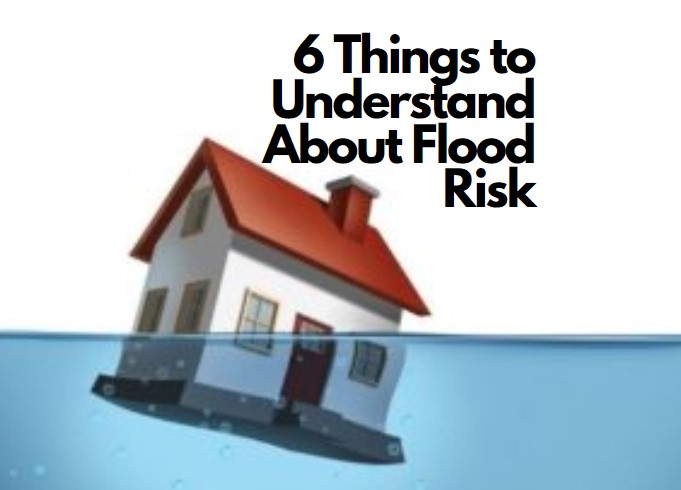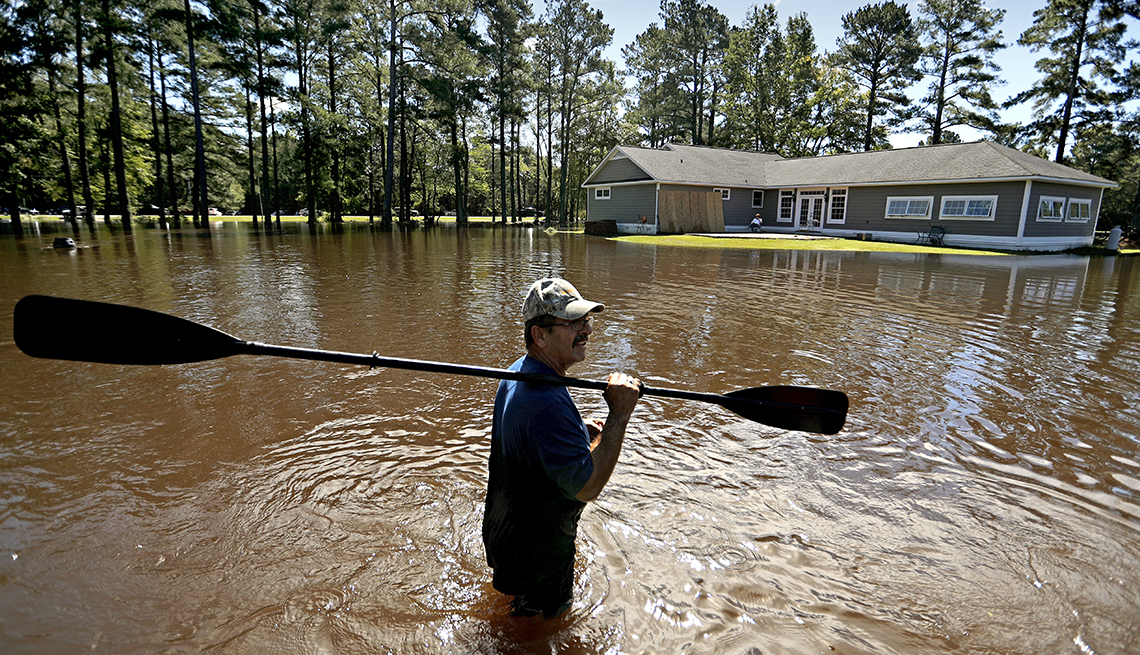
How To Protect Yourself, Your Investment and Your Lake Home.
Flood risk is often a confusing topic with rampant myths and misunderstandings. Read on to learn 6 key things about flood risk that will help you understand how to protect yourself, your investment and your lake home. By MyFloodStatus.com.

2) How flood risk is dictated or measured
FEMA produces both Effective and Preliminary Flood Insurance Rate Maps (or FIRMs). The Effective maps are the active maps that dictate current flood status. There are several Flood Zones, from low-risk zones to high-risk zones such as the Special Flood Hazard Areas (SFHAs). The Effective FIRM dictates the location of ALL Flood Zones, and identifies the current level of
risk associated with each Zone.
Preliminary maps show proposed changes that may come into effect in the future. It’s important to understand that flood risk can change over time because of new building and development, weather patterns and other factors. FEMA maps are sometimes outdated, frequently updated, changed and re-released, meaning that for many properties and homes, the level of flood risk – as dictated by FEMA – may change. What’s more, mother nature does not adhere to lines on a map. Where it can rain, it can flood, and so truthfully everyone is at risk.
So, how can a lakefront homeowners know their true level of risk? Well, many people rely on what their lenders or insurance companies tell them, but it’s critical that homeowners advocate for themselves to be as protected and prepared as possible.
3) When flood insurance is required, and by whom…
For federally-backed loans, flood insurance is required when a structure contacts a high-risk flood zone (Special Flood Hazard Area or SFHA). For all federally-backed loans, it’s the lender who is required to run a Flood Determination (aka Flood Cert) that tells them whether a structure is in an SFHA according to FEMAs Effective FIRM. If the determination says YES, the lender must force-place flood insurance on the collateral securing the loan, i.e. the homeowner must carry a flood insurance policy.
If a loan is being acquired with private funds, depending on the lender, flood insurance may or may not be required. If a property is being purchased with cash, there is no requirement.
…and how this limits your flood risk awareness
Let’s stop and take note of that Flood Determination ordered by the lender: Typically, the results of a flood determination ordered by a lender are not even brought to the buyer’s attention unless it was marked YES, requiring insurance. The details of a lake property’s flood status would therefore go unknown by the homeowner.

One problem with this scenario is that flood risk is not black and white. It’s not always as clear as a YES vs NO. Even if their report says NO, and they lender doesn’t require flood insurance, that does not mean you have zero risk of flooding. And, if their report says YES, you could be mis-identified and/ or have potential to remove or reduce your flood insurance rates.
It’s up to you to champion for yourself and take the easy steps to get the accurate information and expert support that will confirm your true flood status as well as the options you may have to
protect yourself and potentially save money.
4) How to get a clearer picture of flood risk
Flood Risk is a topic that lakefront homeowners frequently boil down to one question, “Am I in a Flood Zone?”, when the reality is that everyone is in a flood zone, it’s just a matter of risk. Homeowners should instead be asking: “What level of risk applies to my insurable building?” And, “How can I see the full picture of my current risk and potential future risk?” A MyFloodStatus Flood Zone Determination Report, and expert support that comes with it, gives you everything you need to answer these questions and help you take action!
Your local lakefront property specialist Realtor can provide this information for FREE for any property you are interested in!
We’ll show where your lakefront structure is located in relation to FEMA’s Effective Map. If a Preliminary Map has been released we’ll provide that as information as well. Our expert support team will evaluate further mapping details that can help identify options for recourse – potential removal, decrease or mitigation of current flood risk.

We serve as your very own flood specialist, providing you with superior documentation and unparalleled support as you procure flood insurance estimates and/or pursue steps toward mitigation.
5) How flood risk can be challenged and mitigated
If our Flood Zone Determination Report reveals your structure is in an SFHA, or has been incorrectly identified as being in an SFHA, there are steps that can be taken to challenge and confirm the true level of risk you face. Direct support from our experts is what sets us apart from others in the industry. Live support from our trained Certified Floodplain Managers and GIS Specialists allows us to identify any options for possible removal or reduction in risk level (and therefore any applicable insurance costs). We guide and consult on your subsequent efforts for mitigation.

Options for mitigation may include securing a Letter of Map Amendment (LOMA) or an Elevation Certificate (EC).
6) How to be as protected from flood risk as possible
We are not an insurance company, and are not affiliated with any insurance company. As an independent third-party, we always recommend flood insurance be considered even if you’re not in an SFHA. Our report can be provided to your insurance company to secure a quote. It’s our greatest misision to help you gain clarity and confidence in your real-estate investment and in your quality of living. The best way to achieve this is by accessing the most accurate and transparent flood information available. While there’s no guarantee flooding won’t ever occur, by securing a MyFloodStatus Flood Zone Determination Report and leveraging the expertise of our team, you’ve taken every step possible to protect yourself and your home.
Posted By Scott Freerksen “The Lake Guy”
